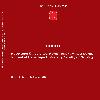Biyoloji ve Biyoloji Öğretmenliğine Karşı Tutumlarına Göre Biyoloji Öğretmen Adaylarının Tiplerinin Belirlenmesi
Sosyal psikolojinin en önemli kavramlarından biri olan tutum, bir olay, kişi veya objenin birey tarafından pozitif veya negatif değerlendirilmesi eğilimi olarak tanımlanmaktadır. Tutum, günlük yaşamda yapılan davranışların bir çoğunu etkiler. Belirli bir objeye karşı tutum ve davranış, bu objeye özel sorular yöneltilerek ölçüldüğünde, büyük olasılıkla önceden tahmin edilebilmektedir. Tutumlarından yola çıkarak geleceğin öğretmenleri öğretmen adaylarının sınıf içi davranışlarının önceden tahmin edilebilmesi için alana ve öğretmenlik mesleğine karşı özelleşmiş tutumun ölçülmesi gerekmektedir. Bu çalışmada biyoloji öğretmen adaylarının “biyoloji”ye ve “biyoloji öğretmenliği”ne karşı tutumlarını belirlemek amacıyla kapalı uçlu sorulardan oluşan bir anket kullanılmıştır. Anket, Hacettepe Üniversitesi Eğitim Fakültesi Biyoloji Eğitimi Ana Bilim Dalı’nın 1., 2., 3., 4. ve 5. sınıflarına devam eden 161 öğrenciye uygulanmıştır. Faktör analizi sonuçlarına göre tutum boyutları belirlenmiştir. Bu boyutlar esas alınarak WINMIRA programı yardımıyla yapılan “gizli sınıf analizi” ile 4 biyoloji öğretmen adayı tipi belirlenmiştir. Belirlenen tiplerin cinsiyete ve sınıflara göre dağılımı incelenmiştir.
___
- Akkoyunlu B. ve Orhan. F. (2003). Bilgisayar ve Öğretim Teknolojileri Eğitimi Bölümü öğrencilerinin bilgisayar kullanma öz yeterlik inancı ile demografik özellikleri arasındaki ilişki [Elektronik versiyonu]. The Turkish Online Journal of Education Technology, 2(3).
- Albion, P. (2000). Preliminary investigation of some influences on student teachers’ self efficacy for teaching with computers. AACE, 76(4), 569-582.
- Allinder, R. M. (1995). An examination of the relationship between teacher efficacy and curriculum based measurement snd student achievement. Remedial & Special Education, 27, 141-152.
- Ashton, P. T. (1984). Teacher efficacy: A motivational paradigm for effective teacher education. Journal of Teacher Education, 35(5), 28-32.
- Aşkar, P. ve Umay, A. (2001). İlköğretim matematik öğretmenliği öğrencilerinin bilgisayarla ilgili öz yeterlik algısı. Hacettepe Üniversitesi Eğitim Fakültesi Dergisi, 21, 1-8.
- Bandura, A. (1986). Social foundations of thought and action: A social cognitive theory. New Jersey: Prentice Hall.
- Bandura, A. (1994). Self-efficacy. Encylopedia of Human Behaviour (Ed. V.S. Ramachaudran), 4, 71-78. 04.09.2005 tarihinde www.des.emory.edu/mfp/BanEncy.html adresinden alınmıştır.
- Bandura, A. (1997). Self-efficacy: The exercise of control. New York: W. H. Freeman Company.
- Cassidy, S. ve Eachus. P. (2001). Developing the computer self-efficacy (CSE) scale: Investigating the relationship between CSE, gender and experience with computers. 14.04.2003 tarihinde www.chssc.salford.ac.uk/healthSci/selfeff/selfeff.htm adresinden alınmıştır.
- Compeau, D. R. Ve Higgins, C. A. (1995). Computer self-efficacy: Development of a measure and initial test. MIS Quarterly, June, 189-211.
- Fritz, J. J., Miller-Heyl, J., Kreutzer, J. C., ve MacPhee, D. (1995). Fostering Personel teaching efficacy through staff development and classroom activities. Journal of Educational Research, 88(4), 200-209.
- Gibson, S., ve Dembo, M. H. (1984). Teacher efficacy: A construct validation. Journal of Educational Psychology. 76(4), 569-582.
- Hill, T., Smith, N. D., & Mann, M. F. (1987). Role of efficacy expectations in predicting the decision to use advanced technologies: The case of computers. Journal of Applied Psychology, 72(2), 307-313.
- Karsten, R. Ve Roth, M. R. (1998). The relationship of computer experience and computer self-efficacy to performance in introductory computer literacy courses. Journal of Research on Technology Education, 31(1), 14-24.
- Kinzie, M. B. ve Delcourt, M. A. B. (1991). Computer technologies in teacher education: The measurement of attitudes and self-efficacy. (ERIC Document Reproduction Service No. ED331891).
- Koul, R. ve Rubba, P. (1999). An analysis of the reliability and validity of personal internet teaching efficacy beliefs scale. Electronic Journal of Science Education. 27.12.2002 tarihinde http://unr.edu/homepage/crowther/ejse/koulrubba.html adresinden alınmıştır.
- Loyd, B. H. ve Gressard, C. P. (1984). Reliability and factorial validity of computer attitude scale. Educational and Psychological Measurement, 44, 501-505.
- Midgley,C., Feldlaufer, H. ve Eccles, J. S. (1989). Change in teacher efficacy and student self- and task related beliefs in mathematics during the transition to junior high school. Journal of Educational Pschology, 81(2), 247-258.
- Ross, J. A. (1994). The impact of an inservice to promote cooperative learning on the stability of teacher efficacy. Teaching & Teacher Education, 10, 381-394.
- Saklofske, D. H., Michayluk, C. O. ve Randhawa, B. S. (1988). Teacher efficacy and teaching behaviors. Psychological Social Behavior and Personality, 5, 465-472.
- Schunk, D. H. (1985). Self-efficacy and classroom learning. Psychology in the School, 22, 208-223.
- Ross, J. A. (1994). The impact of an inservice to promote cooperative learning on the stability of teacher efficacy. Teaching & Teacher Education, 10, 381-394.
- Tschannen -Moran, M., Woolfolk-Hoy, A. ve Hoy, W. K. (1998). Teacher efficacy: Its meaning and measure. Review of Educational Research, 68, 202-248.
- Tuckman, B. W. ve Sexton, T. L. (1990). The relationship between self- beliefs and self- regulated performance. Journal of Educational Psychology, 80, 111-117.
- Woolfolk, A. E. ve Hoy, W. K. (1990). Prospective teachers’ sense of efficacy and belief about control. Journal of Educational Psychology, 82(1), 81-91.
- Yüksek Öğretim Kurumu. (1998). Eğitim fakülteleri öğretmen yetiştirme programlarının yeniden yapılandırılması raporu. Ankara.
- Başlangıç: 1986
- Yayıncı: Hacettepe Üniversitesi Eğitim Fakültesi Dekanlığı
Sayıdaki Diğer Makaleler
Ahmet İlhan ŞEN, S. Aslı KOCA ÖZGÜN, Melek YAMAN
Nuri DOĞAN, Özlem BAŞOKÇU DOĞAN
Themes from Retrospective Interviews of School Counselors Who Experienced Burnout
Dale S. SHEFFIELD, Stanley B. BAKER
Use of Creative Drama in Science and Mathematics By Preservice Elemantary Teachers
Pınar ÖZDEMİR, Oylum ÇIKLA AKKUŞ
Metacognition in Foreign/Second Language Learning and Teaching
Fransızca'nın Yabancı Dil Olarak Öğreniminde, Dilsel ve Kültürel Öğelerin Sözlü İletişime Etkisi
Haluk SORAN, Serap IŞIK, Melek YAMAN
Young Attitude on Sustainable Development: A Case Study
Hamide ERTEPINAR, Gaye TUNCER, Ceren TEKKAYA, Semra SUNGUR
Çoklu Zeka Alanlarına Dayalı Öğretimin Öğrencilerin Fizik Başarısına Etkisi
